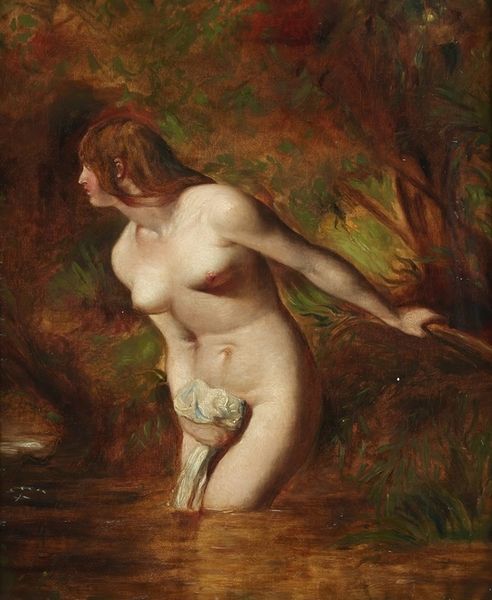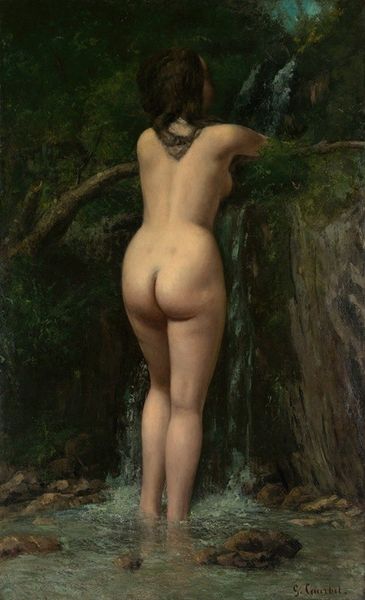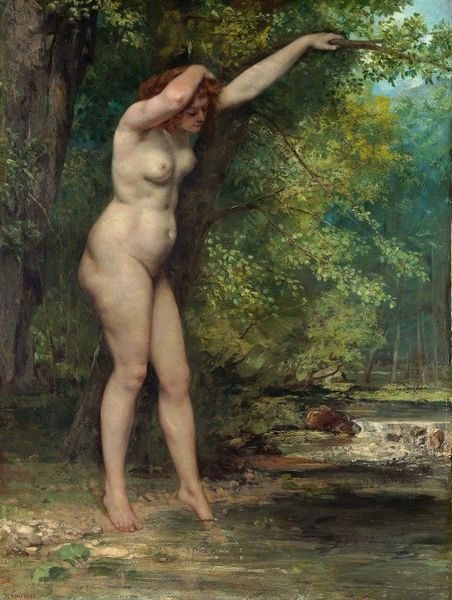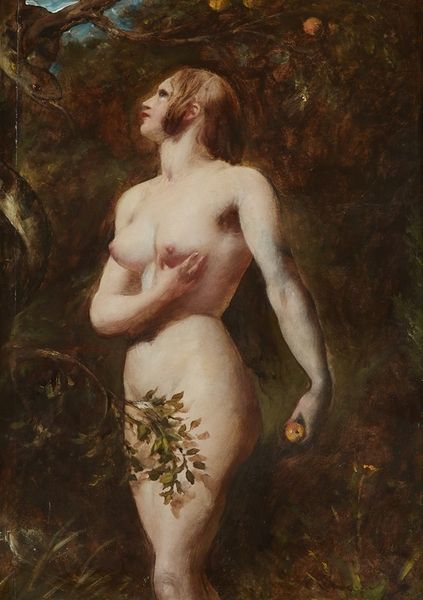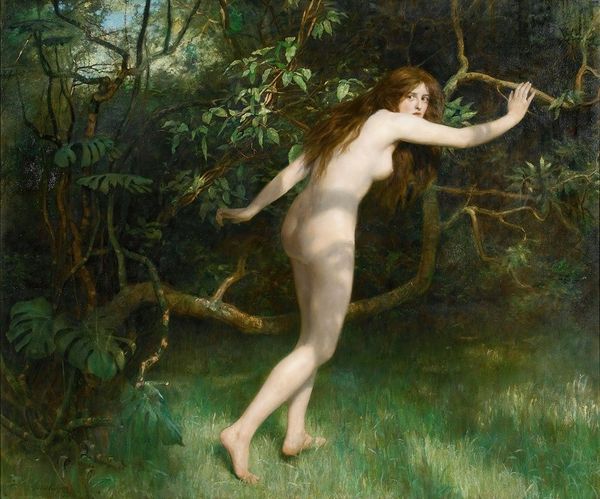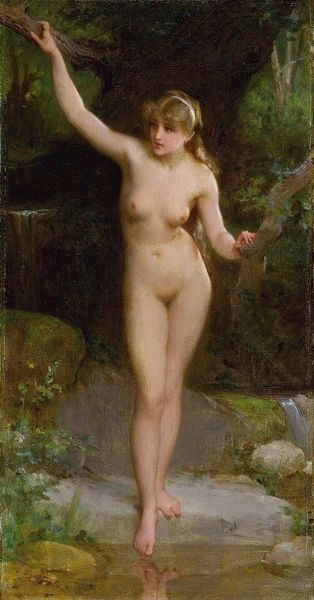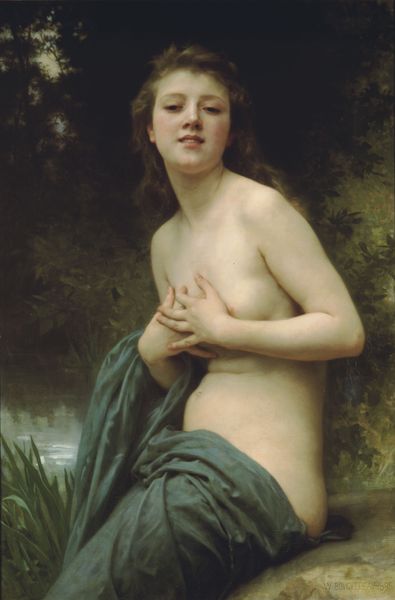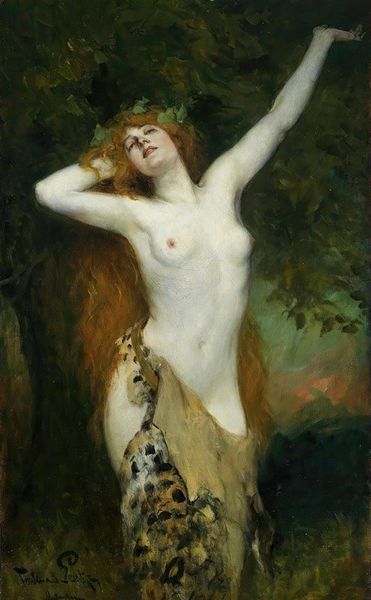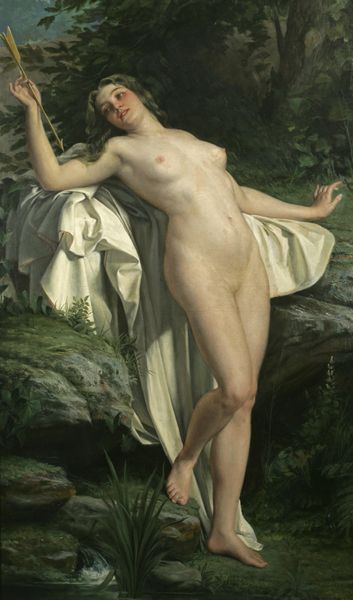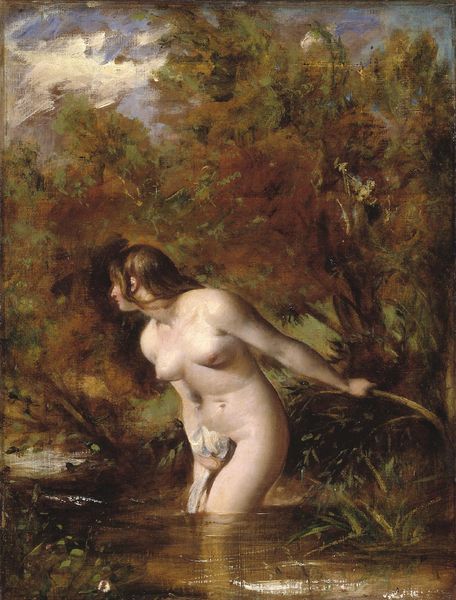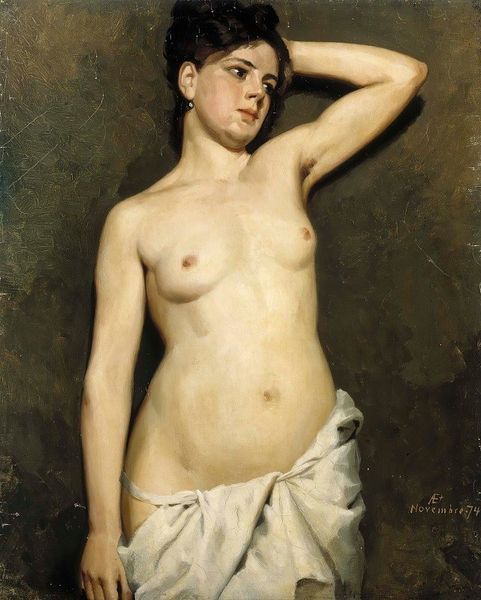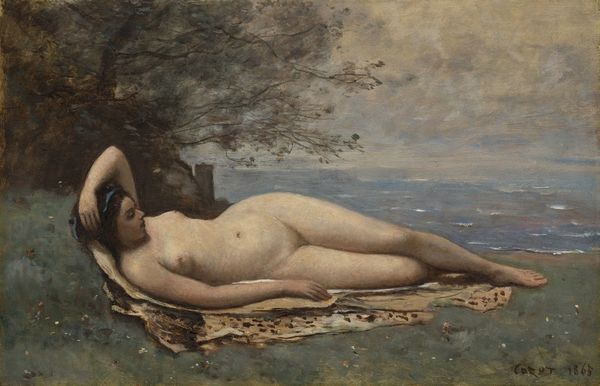
Copyright: Public Domain: Artvee
Editor: Here we have Gustave Courbet's "Nude with Flowering Branch" from 1863, an oil painting. It's quite striking; she looks like she is confidently interacting with the natural world around her, rather than being simply placed in it. What do you make of it? Curator: You know, I’ve always found her gaze incredibly disarming. Not the typical passive, idealized nude we see so often from this period. There’s a frankness there, almost like she's challenging us, daring us to look. The branch seems both an embrace and a screen; it makes me wonder about themes of revealing and concealing, particularly around women. The Pre-Raphaelites were fascinated with similar themes around the same period, too! Editor: A screen, that's interesting. So you see the branch not just as decoration, but maybe as a way to… complicate our viewing experience? Curator: Absolutely! Consider also the historical context: the Realist movement's attempt to depict life as it *really* was, without embellishment. Yet there's undeniable romanticism in the rendering, in the details. How interesting it is that these different influences play on the canvas all at once! Where do you land between realism and romanticism, and why? Editor: I think it leans towards romanticism. The light seems very idealized, almost dreamlike. I guess I am drawn to how Courbet presents this very grounded woman in a light that still feels transcendent. Curator: Exactly. It is in those subtle contrasts, between raw reality and something heightened, that the magic happens! It is interesting how those dynamics influence how one perceives or understand reality versus romanticism and many possibilities in-between! Editor: Yes, I have learned how much context and influences can inform a seemingly straight forward nude.
Comments
No comments
Be the first to comment and join the conversation on the ultimate creative platform.

